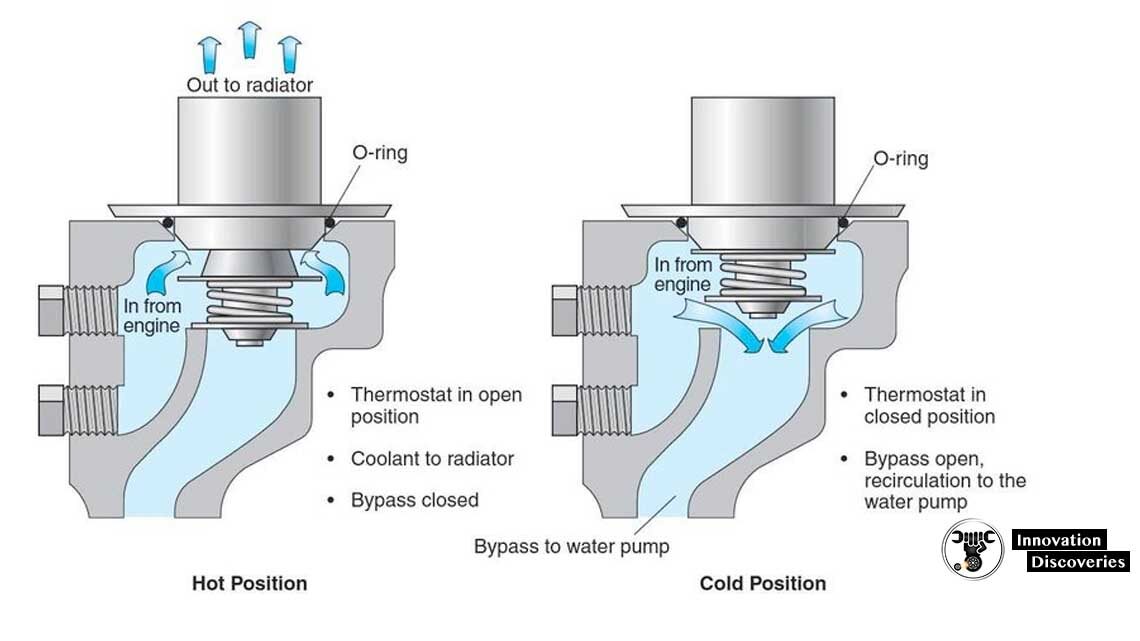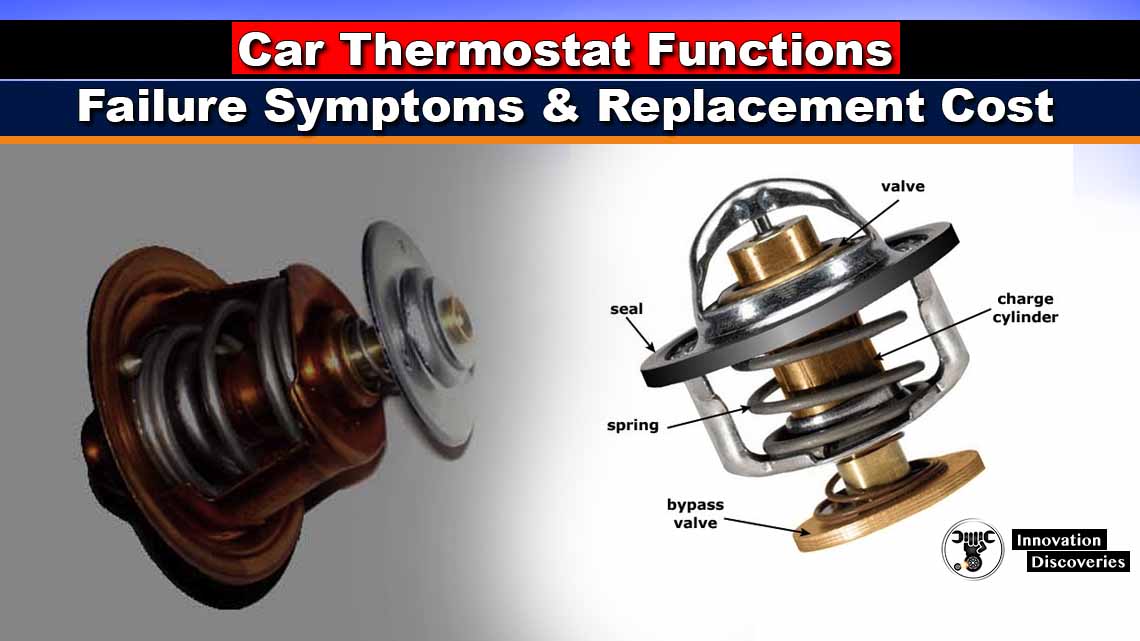A heat-sensing element actuates a piston attached to the seal cylinder.
When the engine is cold, the coolant is routed back to the coolant pump to be recirculated through the engine.
When the engine heats to operating temperature, the seal cylinder gates off the passage to the coolant pump and routes the coolant to the radiator circuit.
The heat-sensing element consists of a hydrocarbon or wax pellet into which the actuating shaft of the thermostat is immersed.
As the hydrocarbon or wax medium expands, the actuating shaft is forced outward in the pellet, opening the thermostat.
Thermostats can be full blocking or partial blocking.
The figure below shows a typical engine thermostat in its engine warm and engine cold positions.

Also, read:
Read More:
- Automotive Engineering Fundamental
- What happens when we add petrol to a diesel car or vice-versa?
- How does an oil sump work in your car?
- How much does Replacing A Cylinder Head cost?
- Symptoms of a Bad Radiator Cap (and How to Inspect)
- Car Cooling System – What To Do To Keep Its Cool?
- Identifying Hydraulic Cylinders on your Backhoe
- Types of 6 Stroke Engines
- Crank Mechanism Construction



3 Comments